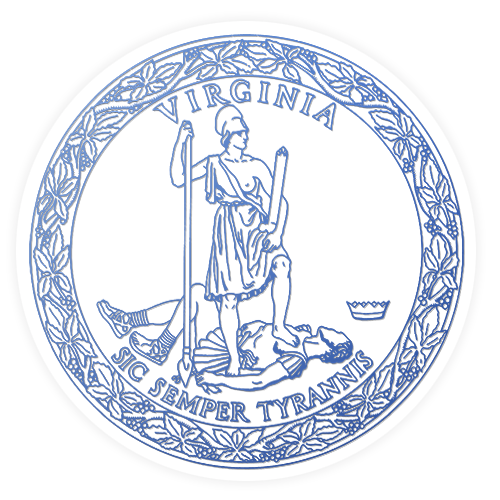
RICHMOND—The Virginia Commercial Space Flight Authority (Virginia Space), NASA Wallops Flight Facility, and Northrop Grumman celebrate the successful launch of the 16th cargo resupply mission to the International Space Station. The mission, named NG-16, launched today at 6:01 p.m. EDT from the Mid-Atlantic Regional Spaceport Pad 0A located at NASA’s Wallops Flight Facility on the Eastern Shore of Virginia. It is carrying approximately 8,200 pounds of cargo including crew supplies, hardware, and scientific research to support long-term space exploration missions, lunar habitats, and safe reentry into Earth’s atmosphere.
The Cygnus spacecraft has been named in honor of the first Asian American astronaut, Ellison Onizuka. Hired by NASA in 1978, Onizuka's first spaceflight was aboard the space shuttle Discovery in January 1985. He tragically lost his life aboard the space shuttle Challenger in 1986.
“This vital mission honors the legacy of Ellison Onizuka, whose commitment to the space program inspired many young pilots and whose work was integral to the advancement of human spaceflight,” said Governor Northam. “Today, his work lives on with this launch carrying critical equipment and experiments to the International Space Station. The Commonwealth is committed to growing the aerospace industry as we work to help shape the future of space exploration. Developing space exploration efforts in Virginia has been a focus of our Administration from the start, and I am pleased to see the continued success of the Mid-Atlantic Regional Spaceport.”
The S.S. Ellison Onizuka will arrive at the International Space Station on Thursday, August 12, and will remain attached to the space station until November. NASA astronaut Megan McArthur will capture Cygnus, and European Space Agency astronaut Thomas Pesquet will be acting as a backup. After capture, the spacecraft will be installed on the Unity module’s Earth-facing port. NG-16 is the fourteenth successful Antares launch from the Mid-Atlantic Regional Spaceport Pad 0A, which serves as the homeport of the Northrop Grumman Antares launch vehicle. The Commonwealth built the $120 million launch pad to accommodate the Antares 230+ rocket configuration and Cygnus spacecraft.
“Today, we launched an Antares rocket carrying technology that could allow us to build on the moon, experiments critical to maintaining the health and safety of crews during spaceflight, and a carbon dioxide removal system that could have significant benefits here on Earth,” said Secretary of Transportation Shannon Valentine. “With each launch to the International Space Station, we are sustaining this unique international laboratory, supporting scientific exploration, and encouraging young people to pursue STEM careers.”
Last year marked 25 years since the Virginia General Assembly established Virginia Space Flight as a political subdivision of the Commonwealth of Virginia, and the 75th anniversary of NASA’s Goddard Space Flight Center Wallops Flight Facility. Twenty-one successful missions have been launched from the Mid-Atlantic Regional Spaceport. Virginia continues to play a key role in national security and assured access to space, as one of only four states in the United States hosting a spaceport licensed by the Federal Aviation Administration to launch spacecraft into orbit or on interplanetary trajectories.
“NG-16 is another testament to the fact that Virginia Space has a viable, operational, and competitive spaceport,” said Virginia Space CEO and Executive Director Major General Ted Mercer. “Through our close partnership with NASA and Northrop Grumman, we are directly supporting the advancement of our nation’s space program. We are honored to be a party to these critical resupply missions and look forward to continuing our support to our Nation’s space customers.”
NASA awarded the Commercial Resupply Services contract to Northrop Grumman in 2008. This will be the fifth mission under Northrop Grumman’s second Commercial Resupply Services-2 contract with NASA. Through this contract, a minimum of eight missions will be made to the International Space Station through 2024. Launch pad modifications in 2019 made it possible to accommodate the loading of time-sensitive experiments into the Cygnus spacecraft up to 24 hours before liftoff, shortening the previous four-day pre-loading requirement. This is the fifth official mission to use late loading capability, which has made the facility eligible for missions that include life science investigations in the payload.
The Cygnus spacecraft is carrying critical materials that will support 250 science and research investigations that will occur during future expeditions. These investigations are part of commercial and academic payloads across a variety of disciplines, including:
Also on board will be International Space Station hardware, a special “Genes in Space” payload, and a satellite experiment.
Virginia Space owns and operates the Mid-Atlantic Regional Spaceport, the MARS Payload Processing Facility, and the MARS Unmanned Systems Test Range. The facilities are all located on the NASA Wallops Flight Facility on the Eastern Shore of Virginia, where their mission is to provide low-cost, safe, reliable, and “schedule-friendly” access to space and secure facilities for testing unmanned vehicles for integration into the National Air Space. For more information, visit vaspace.org.
# # #